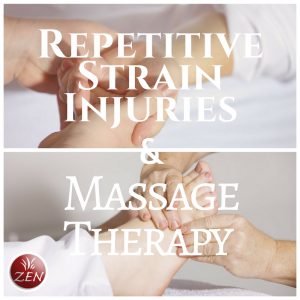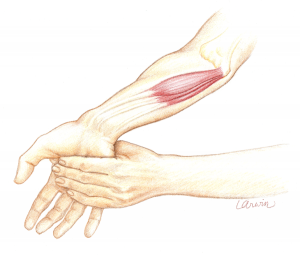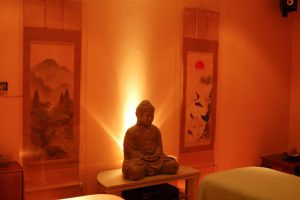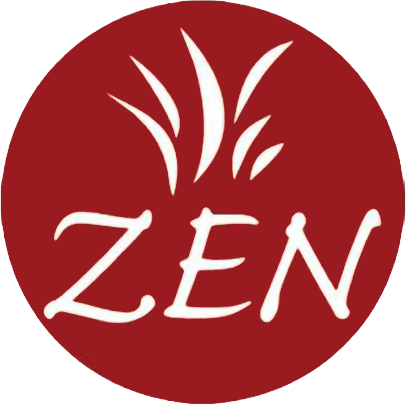For those suffering with a Repetitive Strain Injury, there is no question that, conservative therapy is the best option.

Repetitive strain injury (RSI) can also be called tenosynovitis or chronic tendinopathy by your doctor. Tendinitis happens when you repeat a motion frequently on tight tissues and when the rate of damage exceeds your body’s natural rate of repair. From Trigger Finger to Thoracic Outlet Syndrome, conservative therapy produces the best results, quicker results, and long-lasting relief.
There are many types of conservative treatments with a variety of positive benefits. Massage Therapy is a wonderful conservative treatment providing good results by itself, and even greater results when combined with a stretch and exercise routine.
Massage helps relax and lengthen tight, restricted muscles. It helps break down scar tissue in injured muscles, reduce adhesions (an abnormal union of membranous surfaces due to inflammation or injury) on affected tendons at their point of attachment to the muscle or to the bone. Massage helps remove toxins from muscles and increase overall circulation and nutrient delivery to the associated tissues. All of these wonderful benefits help overworked muscles to relax and injured muscles begin to heal.
Massage Therapy, even with all of its benefits, sadly, does not correct the muscle imbalances causing the Repetitive Strain Injury. Although Massage Therapy can greatly assist the rehabilitation process, once a muscle has been injured and has atrophied to any significant degree, other therapeutic elements must be added to the treatment schedule in order to completely eliminate the Repetitive Strain Injury.
An essential part of treating any Repetitive Strain Injury is a stretch and exercise routine. One that is specifically designed to create structural integrity and muscle balance at the injury site. By creating strong flexible muscles surrounding the specific joint, that joint will no longer be as susceptible to Repetitive Strain Injuries.


According to Mr. Anliker (Therapist and Inventor of Therapeutic Exercise Products for the prevention and rehabilitation of repetitive strain injuries) the integration of Massage Therapy, stretches, exercises and hydrotherapy is a highly effective treatment protocol for many types of injuries. An example of a treatment sequence for a ‘chronic injury’ should follow along these lines:
. Hydrotherapy Heat – Heat to increase circulation to the area, making the soft tissues relaxed and pliable.
. Massage Phase-I – Specific massage treatment utilizing Trigger Point Release techniques to release muscle spasm and Transverse Friction Massage to break down adhesions.
. Stretch – Stretch overly restrictive tissues to increase their length and reduce their compression of underlying tissues.
. Exercise – Perform strengthening exercises for the affected tissues in order to reduce tensile strain on the injured area, heal micro-tears and increase healing nutrients to the injured area. Strong muscles create stability and prevent future reoccurrence of micro-tears to a previously affected area.
. Massage Phase-II – Perform light Petrissage and Effleurage towards the heart to remove the toxins created from undergoing Trigger Point Release, Transverse Friction Massage, stretches, and exercises.
. Hydrotherapy Cold – Cool the injured tissues in an elongated position as to not lose range-of-motion (ROM) of the affected tissues and to further remove toxins from the area.
Massage Therapy along with the techniques above are very effective in eliminating chronic Repetitive Strain Injuries. Any one element by itself is useful, but by implementing several conservative techniques, the success rate of the treatment increases dramatically.
Offering Effective Conservative Massage Therapy @ Zen Massage in Salt Lake City.

